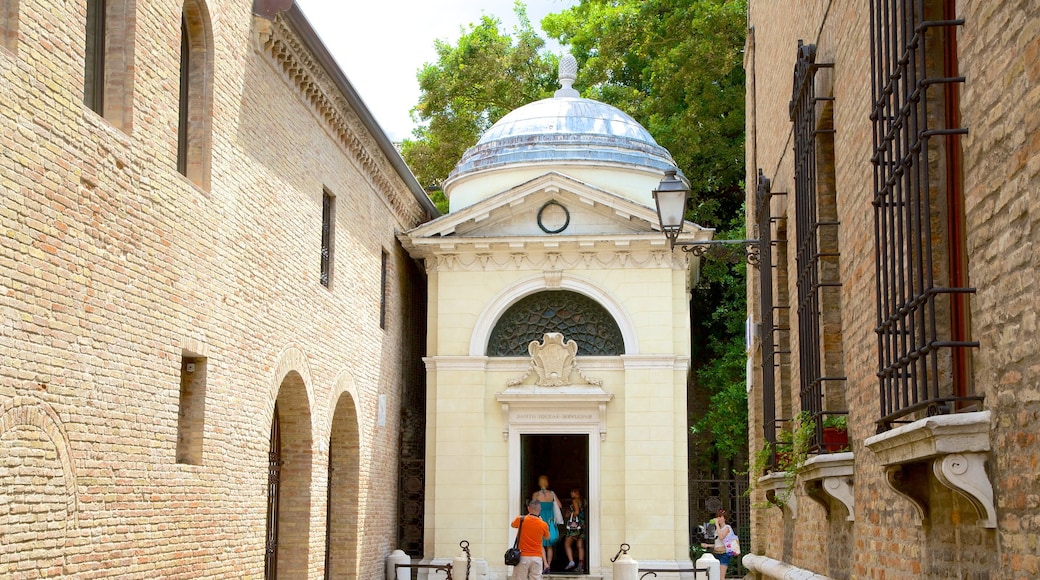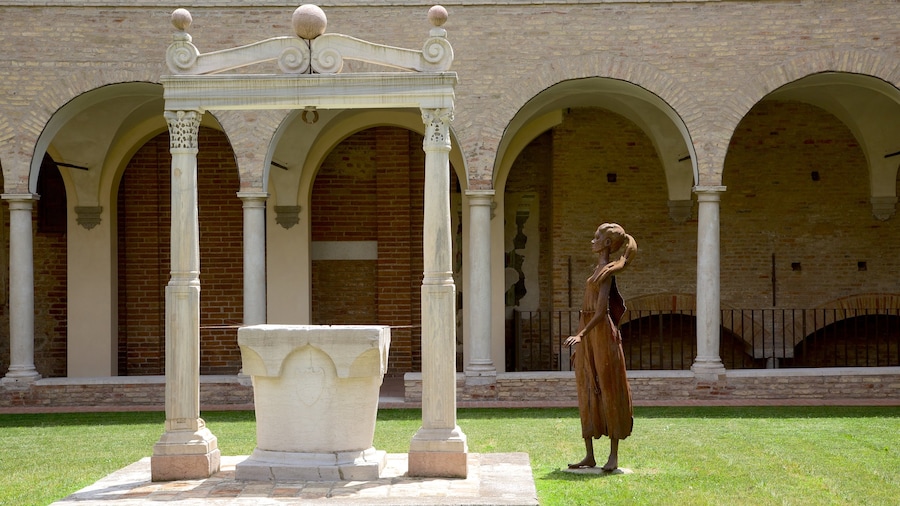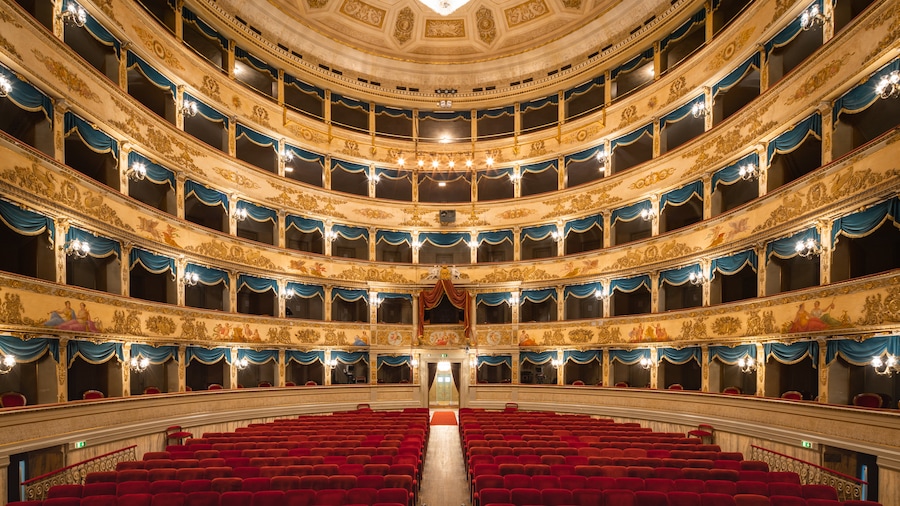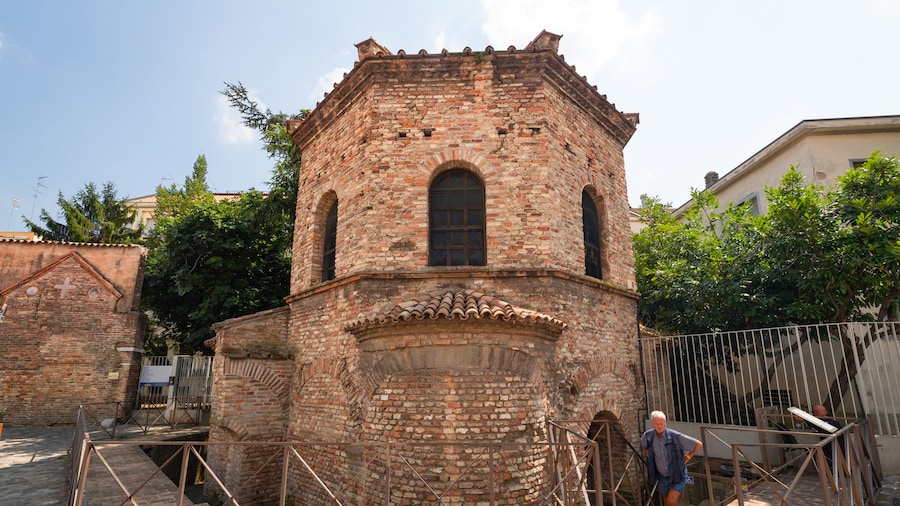Visit Dante Alighieri’s Tomb to learn about how the Florentine poet’s politics led him to spend his final years in Ravenna. Dante Alighieri, considered among the most notable Italian writers in history, was buried in the city. Today visitors travel from around the world to pay tribute at his tomb. Visit Dante Alighieri’s Tomb to hold your own tribute, reflect in the peaceful atmosphere, admire the neoclassical monument and see the urn containing the epitaph written by Bernardo Canaccio.
Embark on the long stroll down the quiet lane that leads to the tomb. Paved with cobbles and lined by historic brick buildings, the street is remarkably tranquil. Note the small white structure at the end of the street, the housing for Dante’s remains.
While Dante passed away in 1321, the current tomb was built much later than the medieval times. Notice the neoclassical elements of Camillo Morigia’s design, which was completed in 1780. Look inside to see the urn containing Canaccio’s epitaph, written 6 years after Dante’s death.
Note the relief mounted above the urn, the work of Pietro Lombardo, showing Dante reading a book at his desk. Interestingly, the relief predates the current tomb by nearly 300 years and was originally located at the Basilica of Saint Francis.
Explore the area around the tomb to see the temporary location of Dante’s ashes during World War II. The ashes were moved nearby, beneath a small plaque now overgrown with ivy, to avoid being damaged by falling bombs.
Dante Alighieri’s Tomb is located immediately next to the Dante Museum and the Basilica of Saint Francis and is best reached on foot. There is a bus stop nearby and pay-and-display parking in the area. The tomb can be visited daily and there is no charge.



















